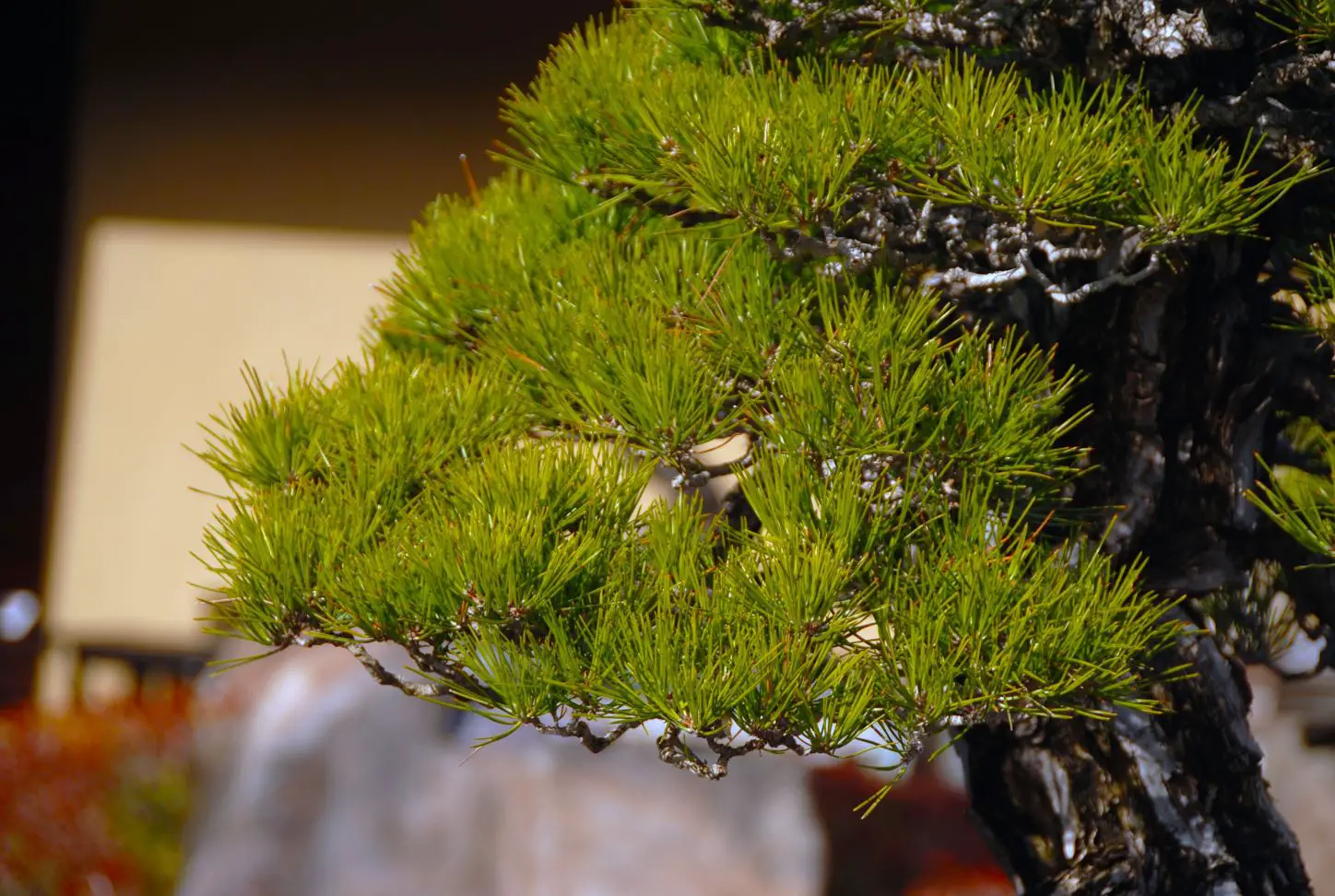Japanese black pines can be kept small by constraining root growth in small pots, pruning candles and wiring branches and trunks. The stresses caused by these activities will restrain growth thus keeping them small.
Can you keep a Japanese black pine small?
Size of Japanese black pine
In nature
Japanese black pine (Pinus thunbergii) is an evergreen coniferous tree native to Japan and southern Korea. In its natural habitat, Japanese black pine can grow quite large, reaching heights of 100 feet (30m) with a spread of up to 50 feet (15 meters). It can be as tall as 200 feet (60m) in a few hundred years.
Japanese black pines are slow growing among pine species, with a growth rate of 16 inches (40cm) per year in nature.
Bonsai
As a bonsai tree, a Japanese black pine can be kept pretty small. The picture below is a mini Japanese black pine bonsai of only 4 inches tall. It is uncertain how old this tree is but it should be at least a few decades old.
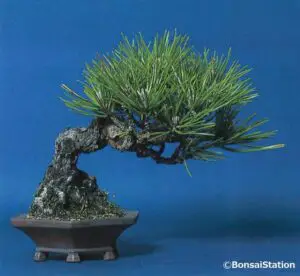
Japanese black pine mini bonsai (4 inches tall)
(Source)
Techniques for maintaining Japanese black pines small
Though it can grow quite large if you let it grow, it is possible to keep a Japanese black pine small through the following 3 techniques:
- Constraining root system,
- Pruning, and
- Wiring.
Constraining root system
Plant roots need air, water, temperature, nutrients, soil, microbes and space to survive and grow. Restricting any of these can suppress growth but constraining space for the roots to grow is the safest, proven way to keep Japanese black pines small. Restricting access to air, water and adequate temperature may be detrimental to plant health.
For a normal plant, a pot size should match the plant’s growth because its growth is limited by the size of the pot and the amount of soil it has access to. If you want your plant to grow big, you need a bigger pot.
But here, we want it to be small. To be able to do this, we need a smaller pot compared to the plant size. Roots rely on plant aerial portions for photosynthesis, while plant aerial portions rely on the roots for water, nutrients, support, and hormones. In general, as pot size decreases, plant leaf, shoot and root biomass altogether decrease as growth rates of shoots and roots are interdependent.
So, restricting the growth of roots will decelerate plant growth. Root restriction is a physical stress on the plant that causes a pronounced decrease in root and shoot growth.
That being said, it is important to select a pot that has some room to accommodate the plant’s root system to grow. Without any space for growth, your Japanese black pine tree can be rootbound.
A rootbound tree cannot absorb nutrients and water well because there is not much soil left in the pot. It can kill the tree if untreated. Root rot may occur as well as water does not drain from the drainage holes which are covered with roots.
To avoid this and to be able to maintain its health, your Japanese black pine tree should be repotted regularly; every 3-4 years if your tree is mature.
Pruning
Another technique for keeping Japanese black pine small is pruning. Pruning is basically a process to make a dwarf tree and pruning candles is an effective way to keep Japanese black pines small.
Unlike many other plants, Japanese black pines do not form lateral buds along the stem. They instead form a loop of buds at the tip of each shoot.
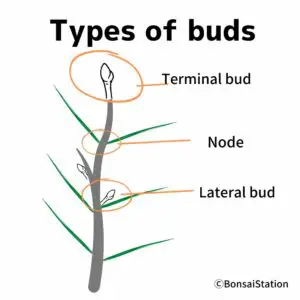
Terminal buds and lateral buds at different locations (maple)
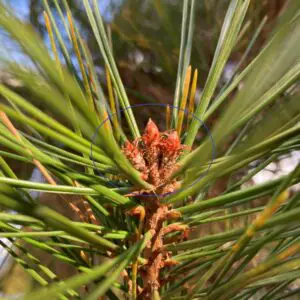
Japanese pine buds formed at the tip of the shoot
If the terminal buds on a shoot are lost somehow, the shoot will not be able to produce branches the next year because they do not form lateral buds in the middle of branches.
We can take this characteristic to our advantage; we prune shoots during the candle stage we can control the height of the tree while there is still time for trees to form the terminal buds for next year.

pinching pine candle
(Source: Virginia State University)
Candles may be pruned with pruners or simply pinched by hand. Take off the new shoots by half when they have come out while the new needles have not yet come out. Vigorous and big shoots can be pinched back nearly at the base. Small shoots with poor growth, on the other hand, should be left unpinched.
Make sure not to cut off all the terminal buds if you want that branch to grow next year. Remember, if they are all removed, growth on that shoot ceases to end with additional growth occurring only from existing side branches.
For Japanese black pines, pruning the terminal buds will not stimulate additional bud development along the stem, unlike single-needled conifers like fir or spruce. In other words, there is no back-budding for Japanese black pines.
Wiring
The last technique to keep Japanese black pines small is wiring.
According to scientific research, plants are extremely sensitive to touch and repeated touching can significantly retard growth. They say that even the slightest touch can slow down plant growth. Touching your tree continuously may be difficult but wiring does the same trick.
Wiring is a bonsai technique to shape a tree into and desired style. As wiring involves bending branches and trunks, its stress increases the production of plant hormones which inhibit it from growing upwards.
This is a good thing if you do not want your tree to grow big.
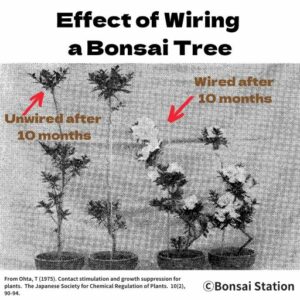
Effect of wiring a bonsai tree
According to another scientific research (∗article in Japanese), branches ramified (multiple small branches developed) very quickly and the flowers bloomed 10 months when they wired an azalea tree. The one without wiring grew vigorously upwards but developed fewer branches and no flowers.
Choosing small variety
If you are thinking of getting a Japanese black pine tree and want to keep it small, you can choose a variety of Japanese black pines that grow small and compact naturally. There are not so many of those but “Yatsubusa Kuromatsu” is one of the dwarf varieties of Japanese black pines.
It is known for its small size and dense foliage, reaching a height of half of the ordinary Japanese black pines (65 feet or 20m) at maturity.

